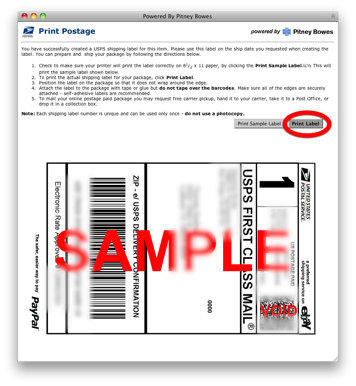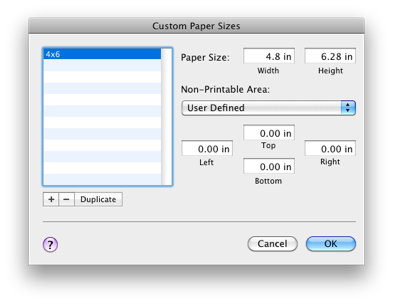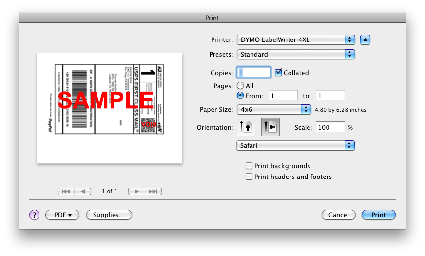-
iPhone Developer Provisioning Portal Tips
Recently I've been put on 2 different iPhone development projects and on both projects, I'm responsible for doing the builds. Any developer that has dealt with the provisioning portal knows how confusing and how much of a pain it is to use. It looks to me like there is a bit of confusion over the portal, so here are some tips.
- There are 2 types of distribution mechanisms; one is through the AppStore and one is AdHoc distribution. So, they need to be differentiated in the project and on the portal to make it clear.
- In your project, I recommend creating 3 configurations; Debug, AdHoc, and AppStore. This makes it clear what you're doing.
- Only the Team Agent (the person that signed up for the developer account) can create the distribution mobile provisioning files (AppStore or AdHoc). So if you as the developer didn't set up the account, you either need to get the credentials of the person that signed up or bother that person when you need to add/remove devices for the AdHoc build.
- Name your provisioning profiles in the portal with AdHoc and AppStore (respectively) so you can easily select the right profile in Xcode. Naming one Distribution is not very helpful.
- Bundle the AdHoc mobile provisioning file with every build sent to testers; the file is small and then no one has to ask you for the file later.
- Save yourself some headaches and check the mobile provisioning files into source control.
- Export the private key and certificate used to create the distribution profiles as a .p12 file and check that into source control. Depending on how paranoid you are, you might also check in a file with the password for the .p12 file. The next developer that takes over your project will thank you for not making them jump through hoops.
While some of this may be obvious and I'm sure some people won't agree with what I say, I think that these tips really make it easier to manage iPhone development.
-
iAm
When the iPhone first came out, it looked amazing, but I hoped it would fail. Why would I wish such a thing? It was quite simple; my work centered around writing synchronization software for smartphones and if the iPhone succeeded, then I'd have to find other work which is always a scary thing to do. Then about 2.5 years ago, my work transitioned away from sync software, so I was doing some iPhone work and was generally pleased with the device. Fast forward another year. I went to work for a company that sold Sprint service, so while I didn't want the iPhone to fail, I couldn't really go around saying it was the coolest phone out there, now could I since Sprint didn't sell it.
Another 18 months have passed since then and almost of all of my work is now iPhone development (and soon to be iPad development), so I can truly be excited about the iPhone without thinking that it will hurt my job nor will me saying I like the phone negatively reflect on my company. So now, I have an iPad, iPod Touch, and an iPhone 3GS (not activated).
When the iPhone 4 was announced, I had to make a decision if I was going to get one. For people that already have an iPhone, getting an iPhone 4 is a relatively minor additional cost. For me, an iPhone will cost around $2000 (the 2 year cost) as I don't have AT&T service. It's not practical for me to port my phone number and drop my Sprint plan as the plan I have is a family plan that is very cheap for what I have (over the years I've had a number of discounts applied and even the base plan you can't get these days). My wife, said to go ahead and get the iPhone. As I don't like spending large amounts of money, I hemmed and hawed over it and decided that if I'm going to say I'm an iPhone developer, it kind of makes sense for me to carry an iPhone.
So there you have it, iAm an Apple fan boy. I really like the products and enjoy writing software for them. Did I get my order in early enough to be one of the first to get one? Unfortunately no so I have to wait until mid July for mine to arrive.
-
How to print shipping labels from PayPal on a Mac
My wife does a lot of USPS shipping via PayPal for her jewelry business. She has been printing the labels on 8.5 x 11 on our laser printer, but to not waste labels, she would print the labels to PDF, put them in Word, crop them and print 2 to a page. This, of course, takes a lot of time. Things got even worse when she runs out of labels; she cuts out the label and tapes it to the shipping envelope.
I decided to look for a better solution and decided to get her a DYMO LabelWriter 4XL
. The printer prints 4x6 labels. Unfortunately, PayPal's Mac support for this printer is non-existent. After a lot of research, I came across an article that explained how to get PayPal to print to the printer. I started following the instructions, but had trouble installing CUPS-PDF on my wife's Leopard machine. After I managed to get it installed and running (I finally found an older version), I was testing it and found a much simpler solution.
Here's the quick and easy way to print shipping labels on the LabelWriter 4XL printer using a Mac.
- Install the DYMO drivers (make sure you grab them from the DYMO Web site as DYMO using strange numbering and version 8.2 isn't the same as 8.2; the latest version is 8.2.2.1172. I had an 8.2 version that was earlier and didn't support the 4XL.
- Set PayPal to print labels to a laser printer or inkjet printer. From the PayPal home page, click Profile. Click Shipping Preferences. Click Edit Printer Settings. Select Laser/Ink Jet Printer. Click Save.
- Print the label by clicking Print Label on the Print Postage Page.

- When you goto print, create a custom paper size called 4x6. However, configure it a little bigger than 4x6.

- Setup the printer to be landscape, print page 1 to 1 (sometimes there is a second page).

- Click Print.
The screenshots were taking on Snow Leopard, so Leopard is a little different. However, that's the jist of how to "easily" print shipping labels from PayPal. Granted there are a few steps involved, but this sure is easier than taking the labels into word, cropping them, printing them and then cutting them out. This seems quite simple, so I'm not sure why no one else figured this out with other 4x6 printers. Granted the LabelWriter 4XL is a new printer, but there are other printers like it.
I hope this helps someone.
-
Review: JetPhoto Studio
Last August when I received the i-Got-U 120, I started looking for software to compliment the device. I found a number of products to make geotagging easy, but didn't find many applications to actually do something with the geotagged data. One product that I found which could do something interesting with the photos was JetPhoto Studio and the accompanying JetPhoto Server. Up until now, my only experience with the software was under test conditions. This past weekend, I finally got to put the software through its paces when I got a chance to actually do something with geotagged photos.
The first thing that had me a little nervous about the software is that there are more Mac and Windows versions. In a lot of cases, the Mac versions are ports of the Windows version. As I've written about before, I'm not a huge fan of software ported to the Mac. The user interface doesn't strike me as a Windows port, but doesn't strike me as a potential winner of the (former) Apple Design Awards. I did a bit of digging into the application package, into the company, as well as the developer information on their site and it looks like the Mac version is the primary version and the Windows version is the port. Perfect, this lets the program pass the first cut and stay on my machine.
I decided to take the pictures from my recent ride on an airship and put it into the software. I noticed that I had to import the pictures into a new JetPhoto Studio album; I had already put them in iPhoto and had to copy them somewhere else. Unfortunately this eats up more disk space (this album is about 250 MB, so now I have 2 copies of all the pictures on my machine). I selected about 50 pictures and "starred" them so that they would be part of what I uploaded. I wanted to simply delete the pictures I didn't want to recover some disk space, but couldn't figure out how to do it, so I starred them. I had already geotagged the photos using PhotoLinker and some open source software for the i-Got-U, so I didn't give the geotagging part a go. In addition, since I wanted my original photos geotagged, I had to do it outside of JetPhoto Studio (as I mentioned before, JetPhoto Studio copies the pictures into its own albums).
Now that I had an album put together, I had a few options for doing something with the pictures. I could export the photos as a Flash gallery, Lightbox gallery, Cover Flow Web Gallery, Google Map Gallery, or sync it to JetPhoto Server. The first options would effectively create a static site that if I wanted to modify, I'd have to re-upload the gallery. So, I went ahead and installed the JetPhoto Server. This was a simple installation that required creating a MySQL table, unzipping the server, and configuring a few items. I've installed so many Linux programs, that the whole process took under 5 minutes. I selected the Web Sync option, entered the credentials, and boom, the site was ready to go.
One of the features that I find extremely compelling is the "Google Maps" mashup which shows the GPS locations and when you click on a pin, it shows the picture at that location. This is almost exactly what I envisioned when I wanted to geotag my photos. This resembles what iPhoto does on its map; however, this method allows you to publish your photos on a Web site. In addition, the server lets you choose how you want the photos viewed (Lightbox, Flash Gallery, etc.) without having to re-upload the pictures.
I'm pretty impressed with the results of JetPhoto Studio, but the management interface is a bit awkward. If you wanted to store all of your photos in JetPhoto Studio instead of iPhoto, then maybe this would be less of an issue.
Pros
- I really like the different output options for the web galleries.
- The Google Maps gallery is a great way to handle geotagged photos. Once I get more geotagged photos from other areas, I think it will be more useful.
- Installation of the server was quick and easy.
- Web Sync worked with no hassle and worked well.
Cons
- Adding images to albums copies them using up extra storage.
- The user interface could use a bit more polish.
- If the application focused on just creating the output and less on the management of the photos, I think it could simplify the interface.
Summary
If I put on my blinders and simply use the software to upload certain albums, I can definitely see myself using it again as I really like the results. In most cases, I don't overlook user interface, but I haven't seen another application (maybe I need to look harder) that quickly and easily produces similar results. I'm not sure what the differences between the Pro version and the free version, but for ease of use, the $25 for the Pro version is likely worth it as Web Sync isn't part of the free version. The developer's blog indicates that some new features are coming to JetPhoto Studio; I can't wait to see them.